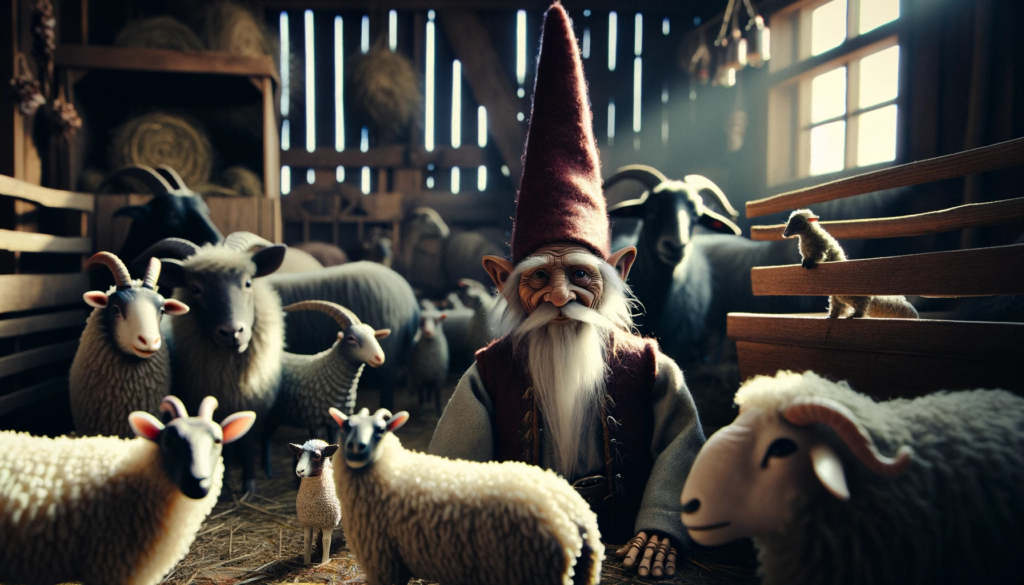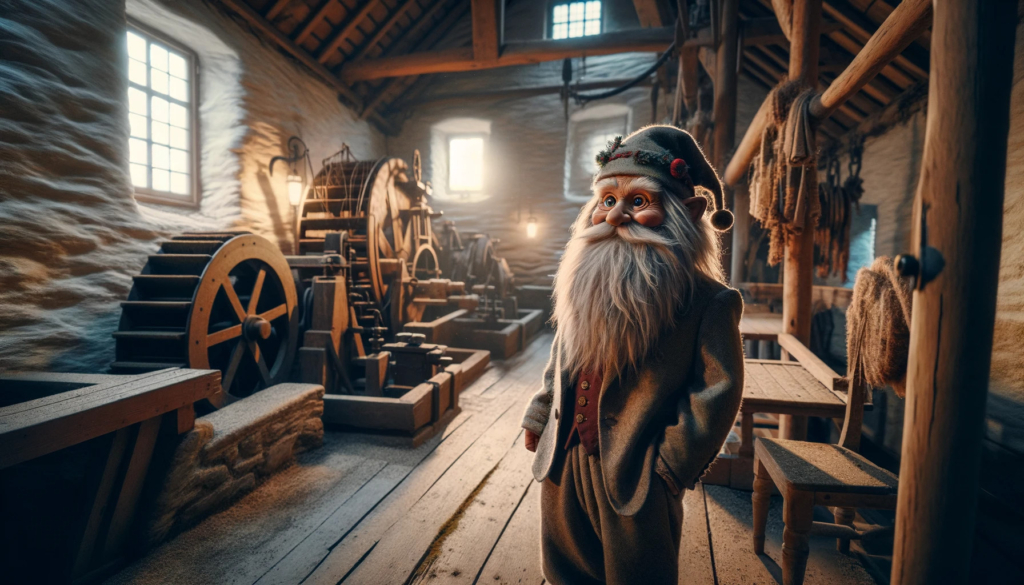The Nordic ”Tomte” or ”Nisse” has no really good translation to English. The closest might be hobgoblin, elf or gnome. But since it is a specific Nordic creature, I will call it Tomte.
The Swedish word ”tomte” comes from ”tomt” – meaning ”plot” as in a plot of land. This is because the tomte was bound to the farm (the plot) where he lived. In many cases, the tomte was the first owner of the farm, who had stayed behind when he died to look after it and its new occupants.

The tomte is often described as a small, old man, dressed in grey clothes and with a red top hat. In some instances he is described as a young boy, and there is a few mentions of female tomtes. However, for the most part, the tomte was not seen as he kept away from human eyes. He worked on the farm at night, looking after the house and the animals. He could also warn the family if there was a fire or an animal fell ill suddenly.
So, most of the time, the Tomte was a benevolent creature, but he was rather grumpy and could be unpleasant if provoked or disrespected. He could physically disciplin family members or farmworkers if they misbehaved or mistreated the animals, for example give them a slap or throw them high up in the air.
He could even leave the farm, and then he took the good luck with him and farm would never prosper again.

If you had a Tomte on your farm, you could count yourself lucky. But you also had to show appreciation and give him gifts. The most common were to give him a bowl of porridge at Christmas, with a dollup of butter or honey in it. If you forgot to add the butter or honey, the Tomte would be deeply upset och could take it out on the farm or the animals.
In one story, the Tomte finds that there is no butter in the porridge, and in his anger, he kills the best milkcow. But when he eats the porridge, he finds the butter at the bottom of the bowl. He then regrets killing the cow, and carries it of to a neighboring farm, where he exchanges it for one of their cows.
You could also give your Tomte clothes as pay for his work. But one tale warns not to give him to nice clothes:

A miller could hear a Tomte working in the mill every night. One night, he peeked through a crack in the wall, and saw that the Tomte had threadbare, dirty clothes. He felt worried and told his wife they had to make new, better clothes for the Tomte.
So they made a fine new outfit and laid it out for him. That night they peeked through the crack again, and saw the Tomte dressed in his new, fine clothes. But alas, the Tomte thought he looked so fine and rich, that he didn’t want to work in the mill no more, and left.
So there was apparently a fine line to walk between treating your Tomte good but not spoiling him.
Sources:
Egerkrans, Johan. Nordiska väsen. (2023)
Wall, Tora. Folktrons väsen. (2021)

